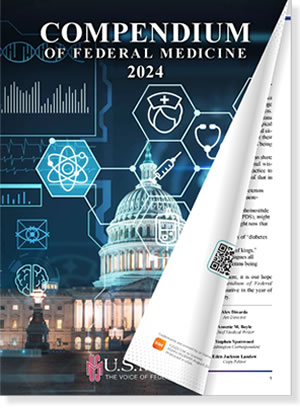NASHVILLE, TN — Michael Kestner, the owner and operator of medical clinics in Tennessee, Virginia and North Carolina, was convicted last month in federal court of fraudulently billing Medicare and TRICARE for $35 million in unnecessary opioid injections.
The 72-year-old was found guilty on 12 counts of healthcare fraud and one count of conspiracy to commit healthcare fraud, and faces up to 10 years in prison for each count. Because the fraud impacted servicemembers, veterans and civilians, the investigation was a joint endeavor between the Justice Department, HHS, VA, DoD and the Tennessee Bureau of Investigation.
During the trial, federal prosecutors proved that Kestner, who is not a physician, pressured nurse practitioners and physician assistants employed at his Pain MD clinic network to provide multiple back injections to most, if not all, of the patients who came to the clinics seeking opioid prescriptions.
These patients were chronic pain sufferers diagnosed with myofascial pain syndrome, fibromyalgia, lumbago, spondylosis, radiculopathy or a combination of those conditions. According to court documents, Paid MD providers did not understand these diagnoses or how to treat them properly.
Instead, they would provide the same treatment for virtually every patient: a narcotic pain pill prescription and a superficial trigger point back injection, according to the prosecution, which added that patients were only given the prescription if they agreed to the injections.
According to the original court filings, patients usually received between six and 20 of these trigger point injections per visit. Witnesses testified that patients who refused to accept regular injections risked not having their opioid prescriptions refilled and being forced to suffer withdrawal.
Because Paid MD could only bill providers for one trigger point injection per visit, regardless of the number of actual injections given, they billed them as Tendon Origin Insertion Injections (TOIs). There is no limit to how many TOIs can be billed per office visit because, according to the filing documents, “qualified providers would rarely, if ever, administer more than one tendon injection during a single office visit.”
This practice made Paid MD Medicare’s single highest biller of TOI procedures in the country, outranking the next highest biller by 800%.
To keep these billings high, Kestner regularly sent emails ranking his practitioners’ billing levels against each other. According to prosecutors, he made employees feel that they would lose their jobs if they did not comply.
Court documents also went into detail about the lack of provider supervision at the clinics. To comply with Tennessee law, during the years the fraud scheme was in operation, Kestner appointed various clinicians as supervising physicians. Each was tasked with overseeing four or five providers spread throughout multiple clinics.
One is now in prison for fraudulent acquisition of a controlled substance; one was cited by the North Carolina Medical Board for poor supervision; and another temporarily lost his license for improperly prescribing narcotics.
Kestner is scheduled to be sentenced on Feb. 27, 2025.
This case was the latest in a growing number of fraudulent billing schemes targeting people seeking pain management, including servicemembers and veterans. A similar injections-for-pills scam was uncovered at a string of pain clinics in Ohio and Michigan, resulting in the conviction of 16 people, including 12 doctors, in 2022.
Investigators have also uncovered and gone on to prosecute several scams targeting veterans and servicemembers being prescribed pain creams. The defendants in those cases took advantage of billing loopholes in TRICARE around medications created in compounding pharmacies.
Veterans and servicemembers face a higher likelihood of becoming victims of one of these scams, since they experience significantly higher rates of chronic pain than the general population—30% compared to 20%. Combat veterans have also been found to be at higher risk for an opioid use disorder, with PTSD being a possible risk factor.

